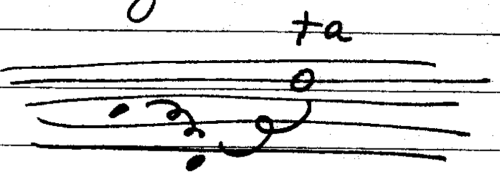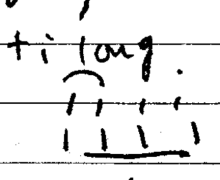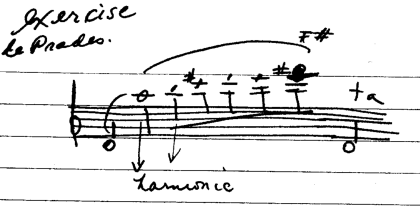Laila’s Private Lesson with Tabuteau 1949
Ludlow Building Studio
Laila became principal oboe in the Houston Symphony Orchestra in the fall of 1948. She returned for a single lesson with Tabuteau after the end of the first season.
Lesson: May 12, 1949
More on the scissors grip: the reed is in a set of pincers. It must respond more to the nuance and to up and down. Don’t let notes collapse: hold them up fully.
Beethoven Symphony 5, 1st Movement: Fa is down, mi is up; don’t play re too soon and don’t let it get sharp. Even exaggerate. Play flatter.
Practice exercises.
Note the scissors grip on the reed: in and out with different positions of the reed for every note.
Practice the root. Get a good grip on the reed, then play all on the same wind. Play on O up and don’t collapse.
Then after all, forget everything and just play. Let the music take you. You must know all the rules and laws, but then forget about them. Respond to the music!
Laila’s Private Lesson with Tabuteau 1950
La Lecque Residence in France
This was Laila’s penultimate lesson with Tabuteau taken after she, John Mack, and Tabuteau played in Pablo Casals’ Bach concerts in Prades during June of 1950.
Lesson: August 1950
Make loop before each note (the bigger the interval, the more loops). It is like placing something slowly. Increase, not the size but the speed, like a top going in fast circles, always circles.
Each interval:
Every note must be placed like the ball on golf: in the hole and you must not miss a game.
For real musical integral value, you can’t beat the oboe, especially for the line. Music must be in rhythm with everything, namely, the physical laws of the universe.
Mozart Concertante:
Exercise de Prades:
Fingering for high F♯:
Laila’s Private Lesson with Tabuteau 1952
La Lecque Residence in France
Lesson: July 19, 1952
Practice intervals, trills, octaves, and scales.
You are using too much teeth in your embouchure in comparison to the speed of the wind. Use more speed to hold up the tone. Travel small and travel like the bow on stringed instruments. Don’t press down. For the line: think!
Practice intervals in this manner:
A: 1234
Second octave E: 5
A: 5432
Low E: 1
Also practice this study with the in-between notes both separated and legato.






